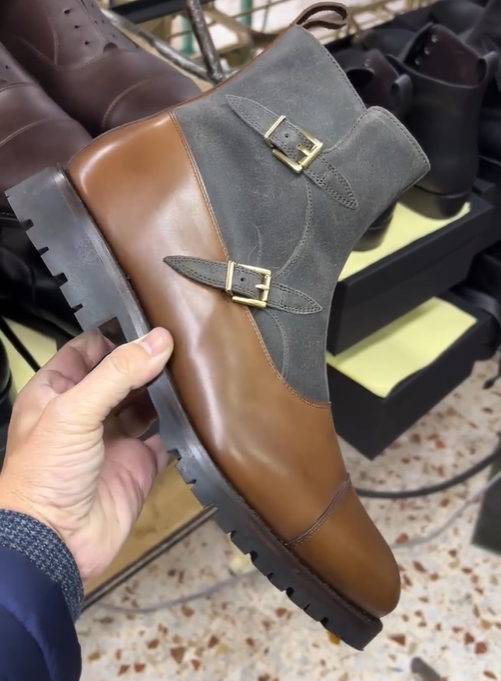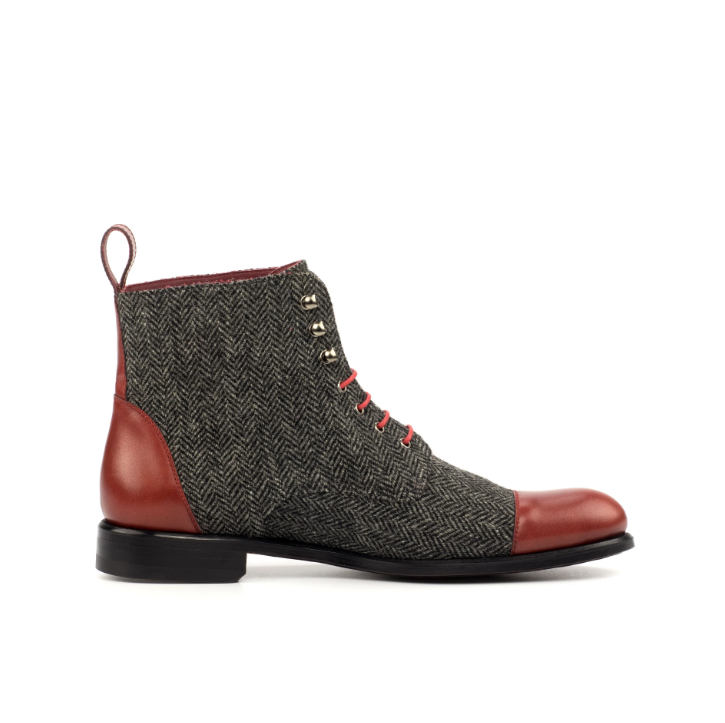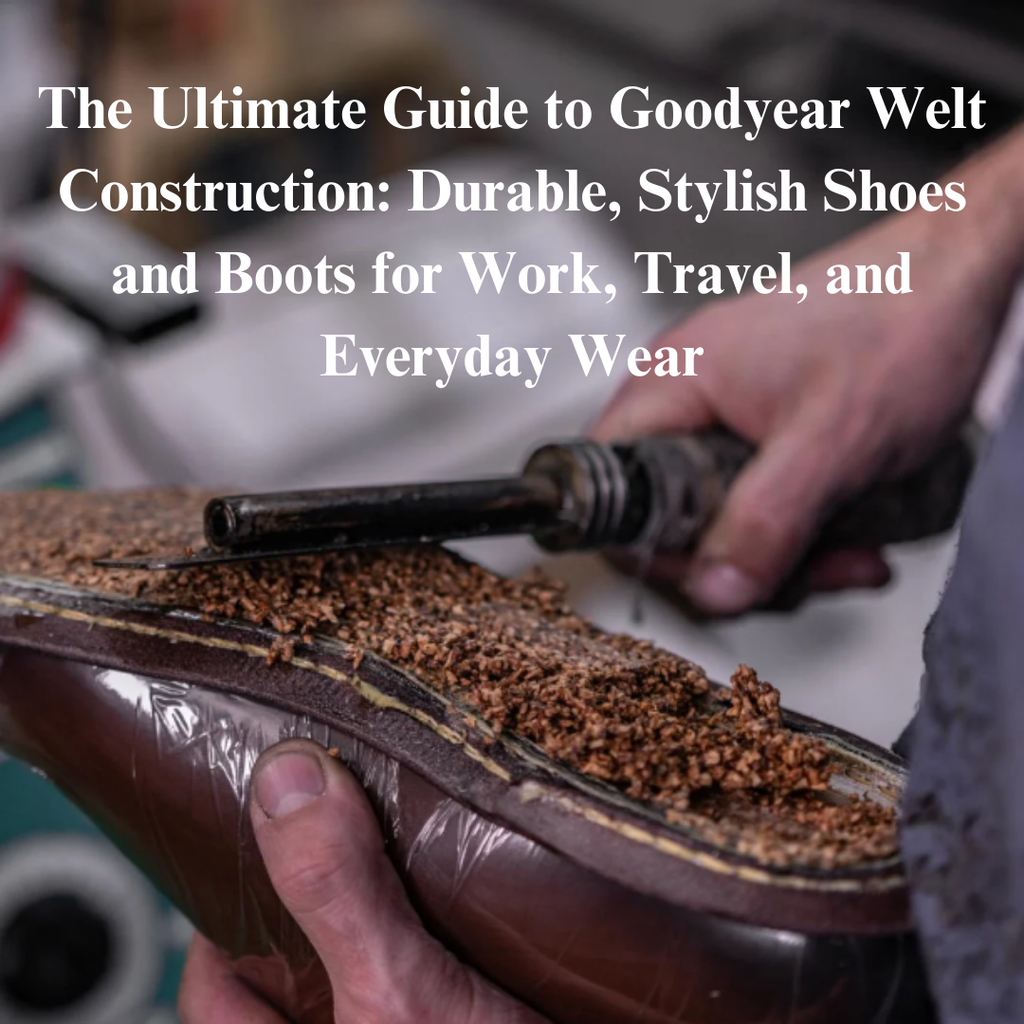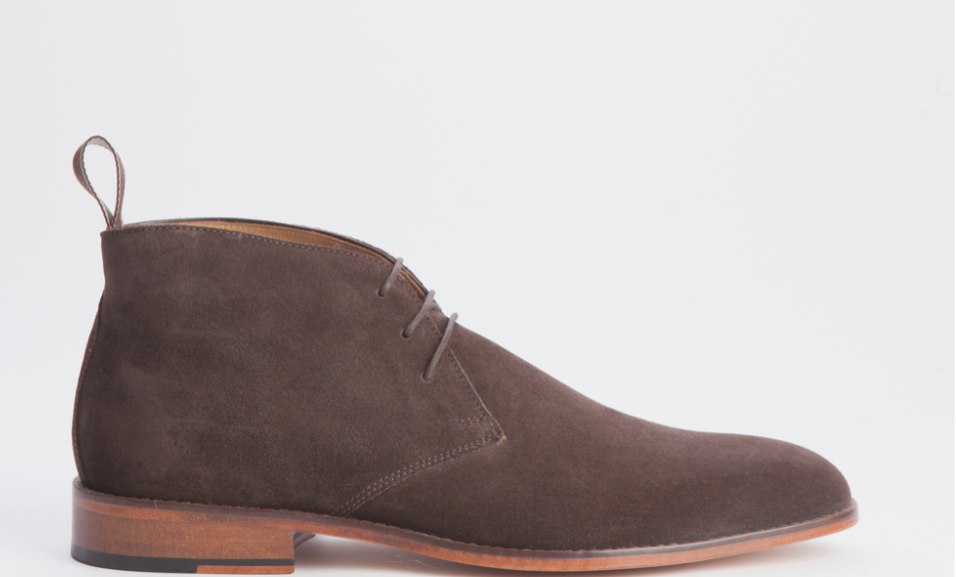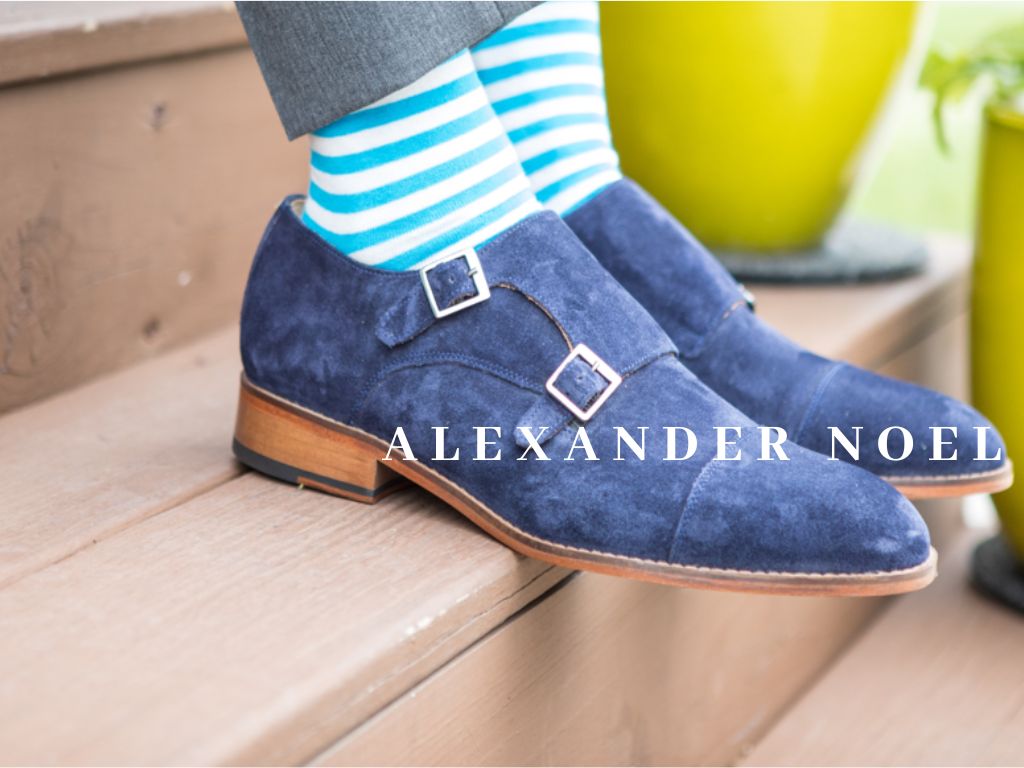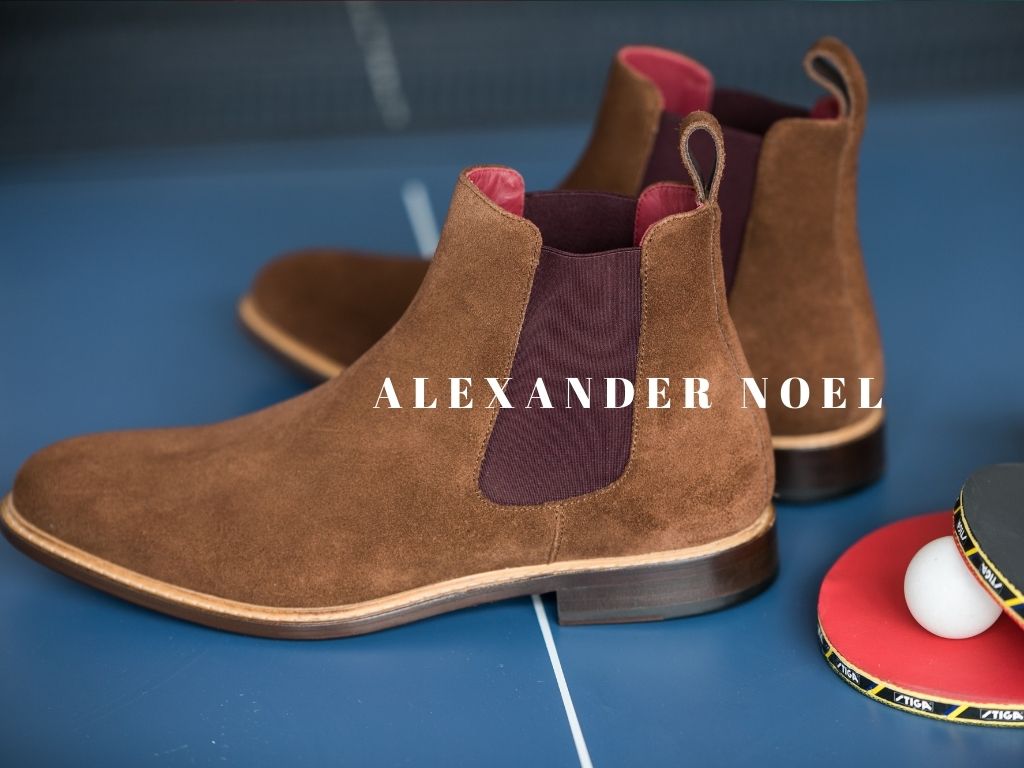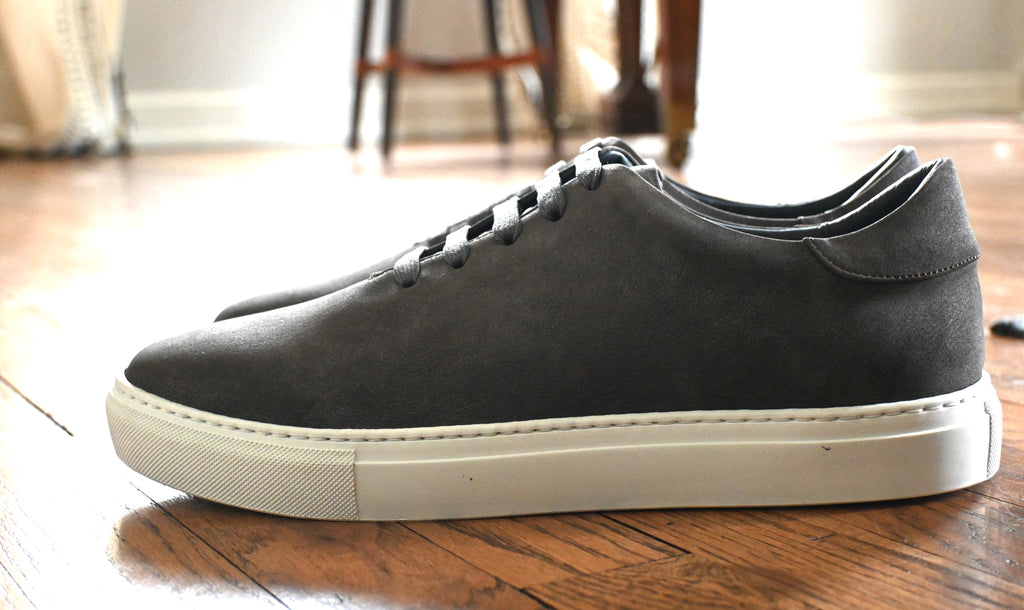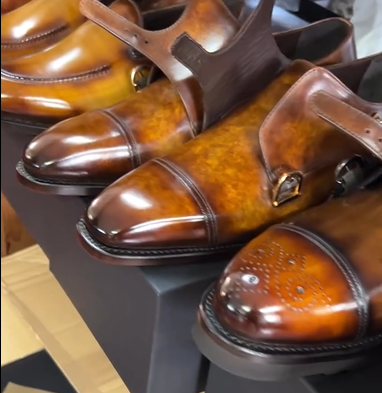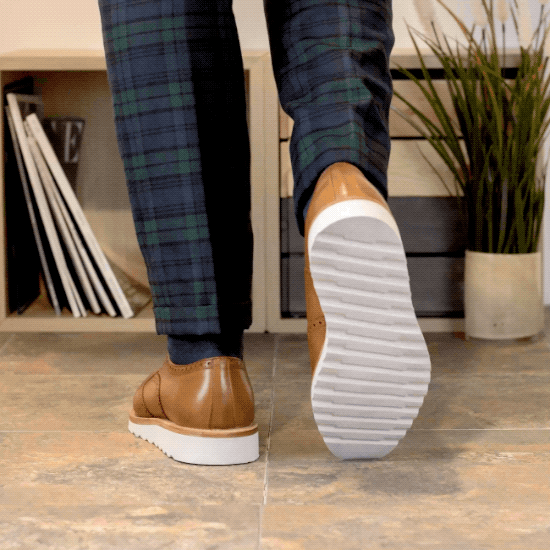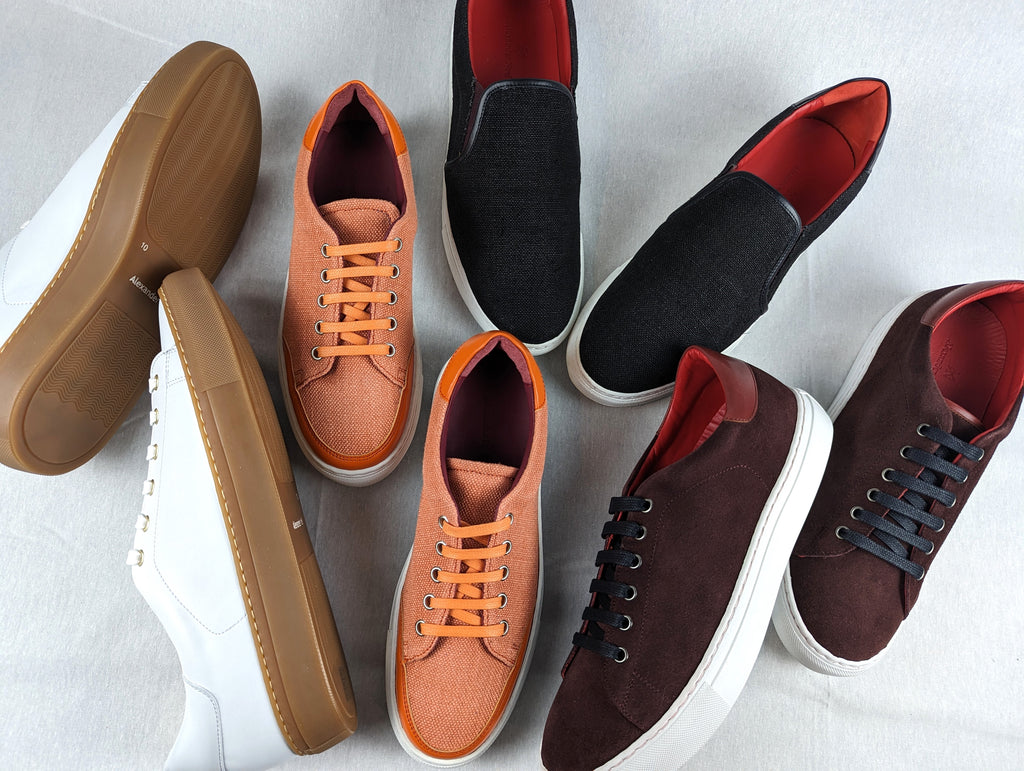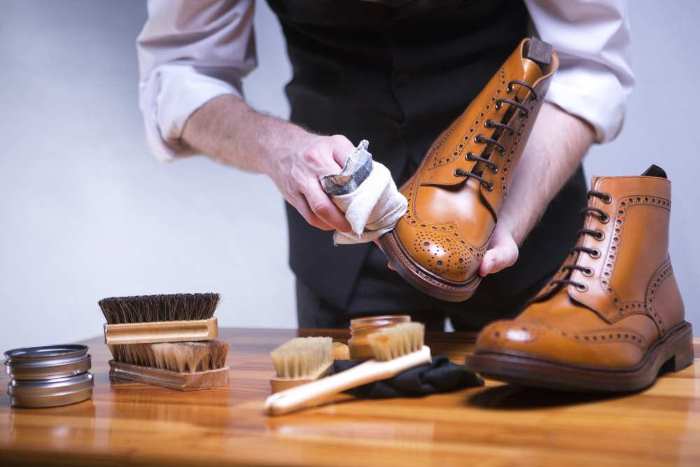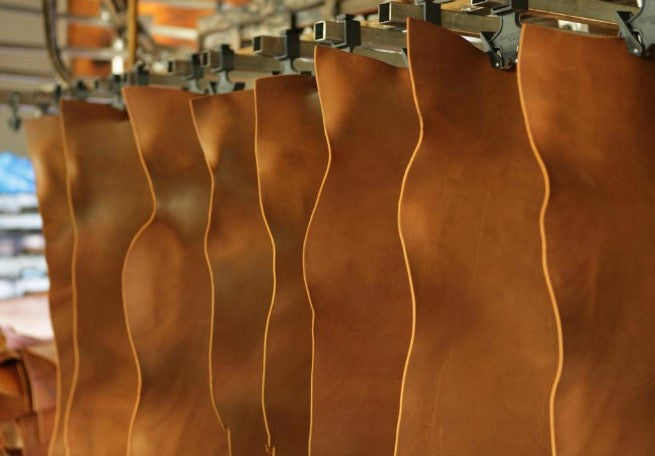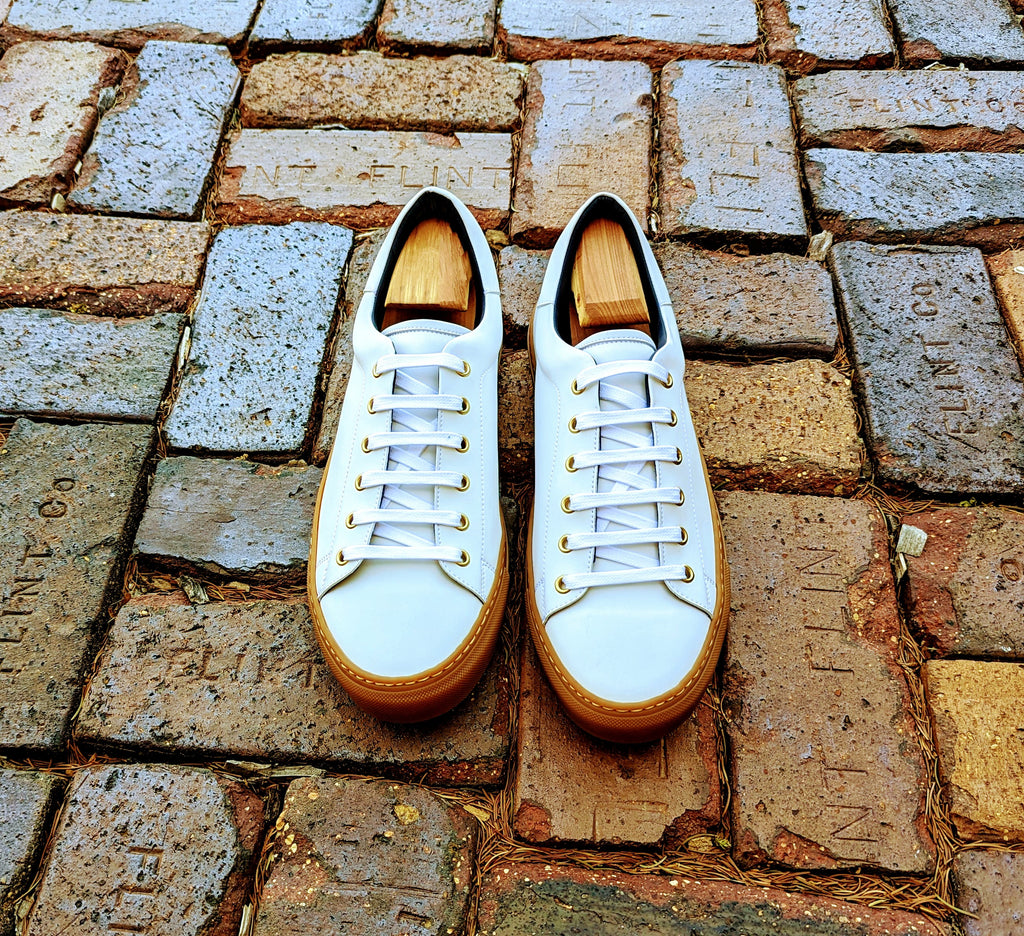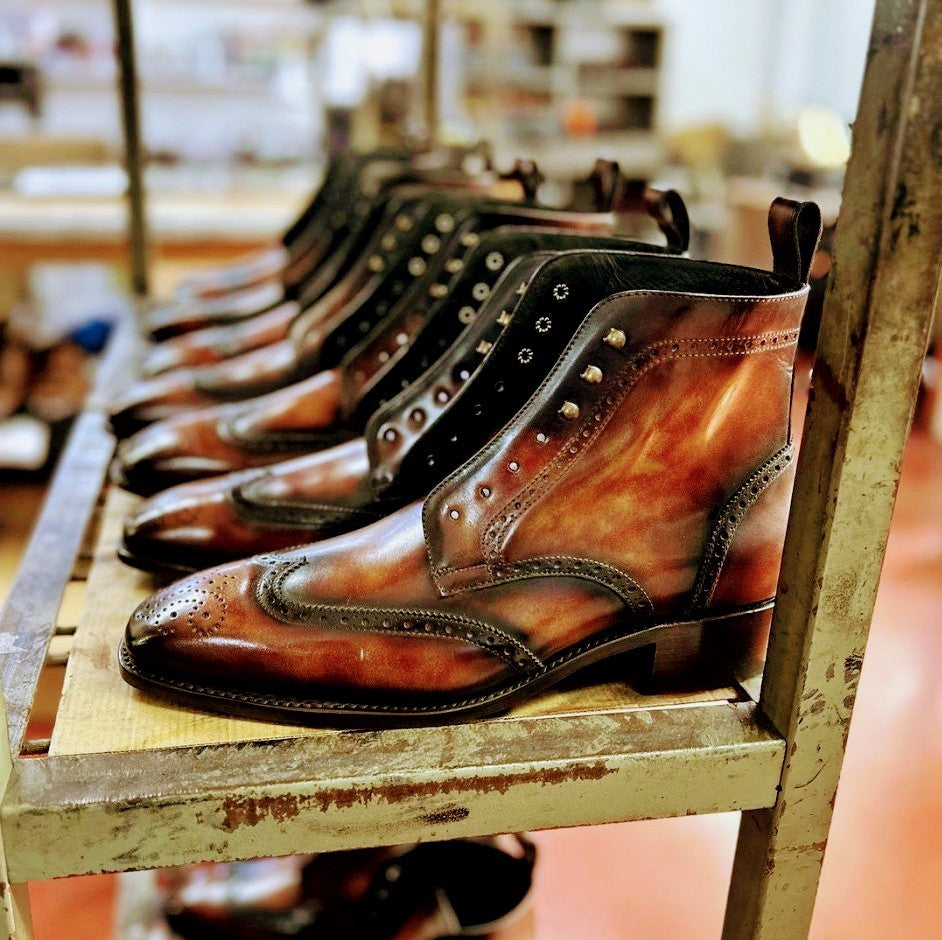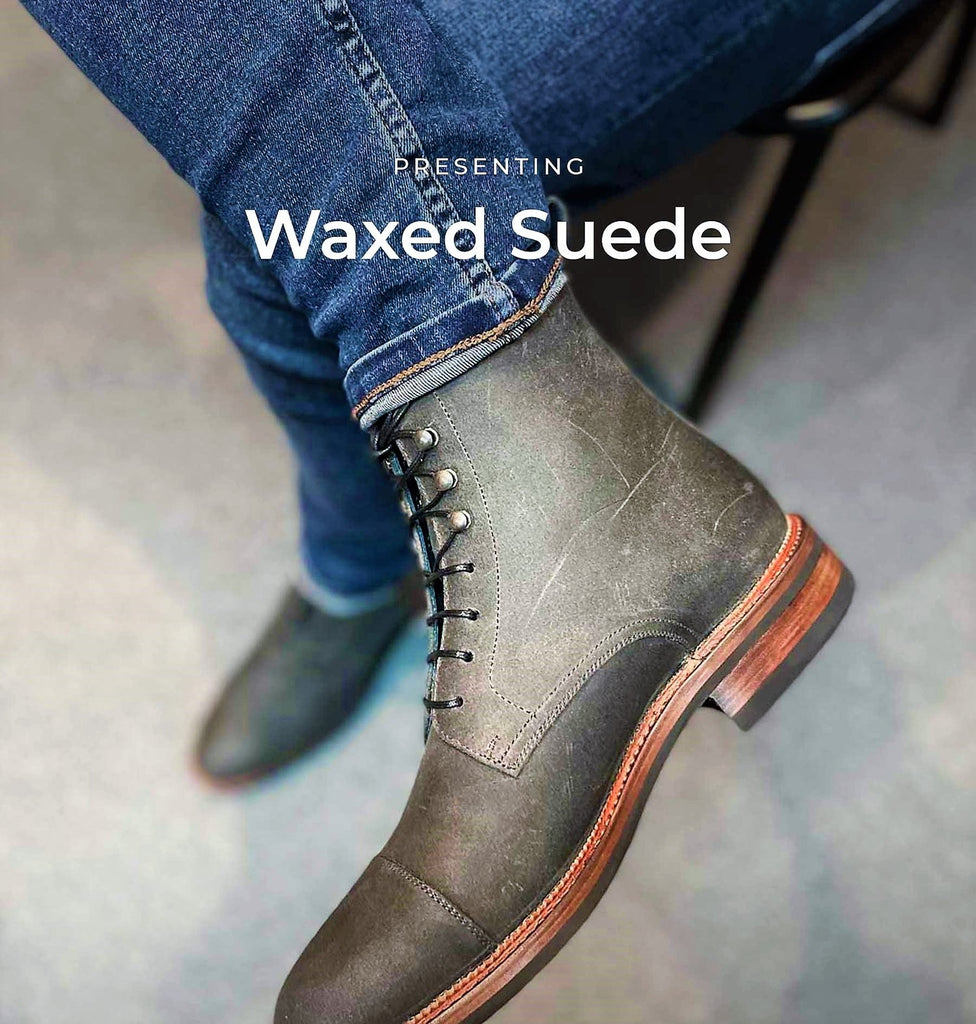
Exploring the Art of Shoe Construction: Cementing, Blake Stitched, and Goodyear Welting Methods (3 minute read)

Shoe construction techniques can be categorized into three main methods: Cementing, Blake Stitched, and Goodyear welt. In our production, we employ both the Blake and Original Goodyear methods, each offering distinct advantages and determining the attachment of the sole to the upper. Among these methods, Goodyear welt construction stands as the oldest, requiring more labor but ultimately resulting in the most durable outcome.

Shoe construction involves various methods, each with its advantages and characteristics. Three of the most common methods are Cementing, Blake stitched, and Goodyear welting, which determines how the sole is attached to the shoe's upper. Alexander Noel's artisans use specifically Blake Stitched and Goodyear Welt construction. This is very consistent with all of our global artisan teams.
Cementing
Cementing is a popular method used in mass-produced shoes. It involves using strong adhesive or cement to bond the sole to the upper. The process is relatively quick and cost-effective, making it a common choice for mass production. The specialized adhesive creates a strong and durable bond between the upper and the sole. However, over time, the glue in cemented shoes can weaken, especially with heavy use or exposure to water. Additionally, resoling cemented shoes can be challenging as removing the sole may cause damage to the upper.
Blake Stitched
Blake stitched is a construction method that directly stitches the sole to the shoe's upper. It utilizes a single line of stitching that goes through the upper and the outsole. Blake stitched offers a sleek and flexible shoe construction because there are no additional layers, making the shoe lightweight and flexible. In addition, the direct attachment of the sole to the upper enhances overall comfort and allows for greater flexibility in the shoe's movement. Resoling Blake-stitched shoes is straightforward, as the sole can be easily removed and replaced. However, Blake stitched may be less water-resistant compared to other methods.

Goodyear Welt
In 1872 Charles Goodyear invented a machine capable of stitching the welt to the insole, thus revolutionizing the quality of footwear worldwide. Due to its longstanding heritage, little needed maintenance, waterproof durability and clean aesthetic, Goodyear method is highly valued in the high-end shoe market.
Goodyear welting is the oldest and most labor-intensive method of shoe construction. It is named after Charles Goodyear Jr., its inventor. This method involves stitching a leather welt to the upper and a separate outsole. The upper is stitched to the welt, and the welt is stitched to the outsole. The double-stitching technique creates a durable and water-resistant bond, making Goodyear-welted shoes highly durable and long-lasting. In addition, the presence of the welt allows for easier resoling as the old sole can be removed without damaging the upper. Goodyear welting is considered a mark of high-quality craftsmanship, requiring skilled artisans and more time to complete.

Summary
In summary, cementing is a quick and cost-effective method, but it may not offer the same level of durability as Blake welting or Goodyear welting. Blake stitched provides a flexible and lightweight construction but may be less water-resistant. Goodyear welting is the most durable and water-resistant method but requires more time and craftsmanship. The choice of construction method depends on the desired characteristics of the shoe, such as durability, flexibility, water resistance, and the ability to resolve the shoes quickly.







